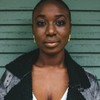Photo by Timur Emek/FilmMagic
Just one week after the taping of the 2018 Victoria’s Secret Fashion Show, chief executive Jan Singer has resigned from her role at L Brands Inc., Victoria’s Secret’s parent company, the Wall Street Journal reports.Singer joined the retailer in 2016 from Spanx to oversee its lingerie division and sought to change the brand’s image to attract younger customers through new products, like apparel and lingerie. According to the Journal, Singer’s resignation is a result of the company’s declining sales. While Victoria’s Secret is ranked as a favorite brand among female millennial shoppers, the lingerie retailer has been struggling to sell even discounted merchandise.Founded in 1977 by Roy Raymond, the Palo Alto, CA-founded company was initially started with $80,000 in loans and a dream to create Victorian boudoir-inspired lingerie. Raymond started the business in a time when department store options for nightwear and undergarments were primarily modest, conservative, and devoid of sensuality.Despite the industry change, Victoria’s Secret has kept to its branding that promotes thin, long-haired, cis-gendered, European-featured women. This marketing gaze was confirmed last week following L Brands’ chief marketing officer Ed Razek’s controversial comments in a Vogue Magazine interview. Razek defended the brand’s decision to not feature plus-sized or transgender models, which drew criticism from the LGBTQ community and plus-sized stars.“Do I think about diversity? Yes. Does the brand think about diversity? Yes. Do we offer larger sizes? Yes,” the executive told Vogue.In the interview, Razek referred to transgender women as “transsexuals,” an outdated — and derogatory — adjective to describe a trans person: “Shouldn’t you have transsexuals in the show? No. No, I don’t think we should. Well, why not? Because the show is a fantasy. It’s a 42-minute entertainment special.” Razek later apologized for his “insensitive” remarks on Twitter, saying, “To be clear, we absolutely would cast a transgender model for the show.”
Advertisement
Victoria’s Secret quickly found success in offering a sexy line that was eventually bought by The Limited owner Leslie Wexler for $1 million in 1982. Nearly four decades later, having gone through periods of high and low sales, the company—which has literally tried to define desirability in the recent past — is now being challenged by younger consumers to evolve in a market that’s increasingly more conscious about diversity.As the fashion industry moves toward improved size inclusion and representation, Victoria’s Secret’s runway shows and overall branding have been heavily criticized for its lack of body diversity in its models. Currently, the brand sells apparel up to size XL and bra size up to 40DDD; Rihanna’s Savage x Fenty, for example, goes up to 44DD.Brands like Savage x Fenty, ThirdLove, Aerie, and Chromat (which notably has Beyoncé as a customer) have emerged as intimate wear competitors, boasting a diverse lineup of sizes and models who vary in gender and body type. Last September, Rihanna was praised for having a lingerie fashion show inclusive of trans, plus-size, and even pregnant models—something Victoria's Secret has never done.
Advertisement
Whether it's diversity or style offering, as noted by Forbes as a potential reason for sales decline, Victoria’s Secret is losing its luster. The company is still the number one lingerie brand in the US, but Victoria's Secret’s share of the market slipped by two percentage points to 28.8 percent over the past five years through 2017, compared with the 0.4 percentage point gain, to 2.3 percent, that Aerie posted over the same period, according to Euromonitor.There's no question that the definition of beauty has evolved since Victoria's Secret's heyday. And with the demand for sexy, yet inclusive branding being at a high, one has to wonder if Victoria's Secret will continue in the same direction it's apparently going in or work to appeal to consumers who demand much more.
